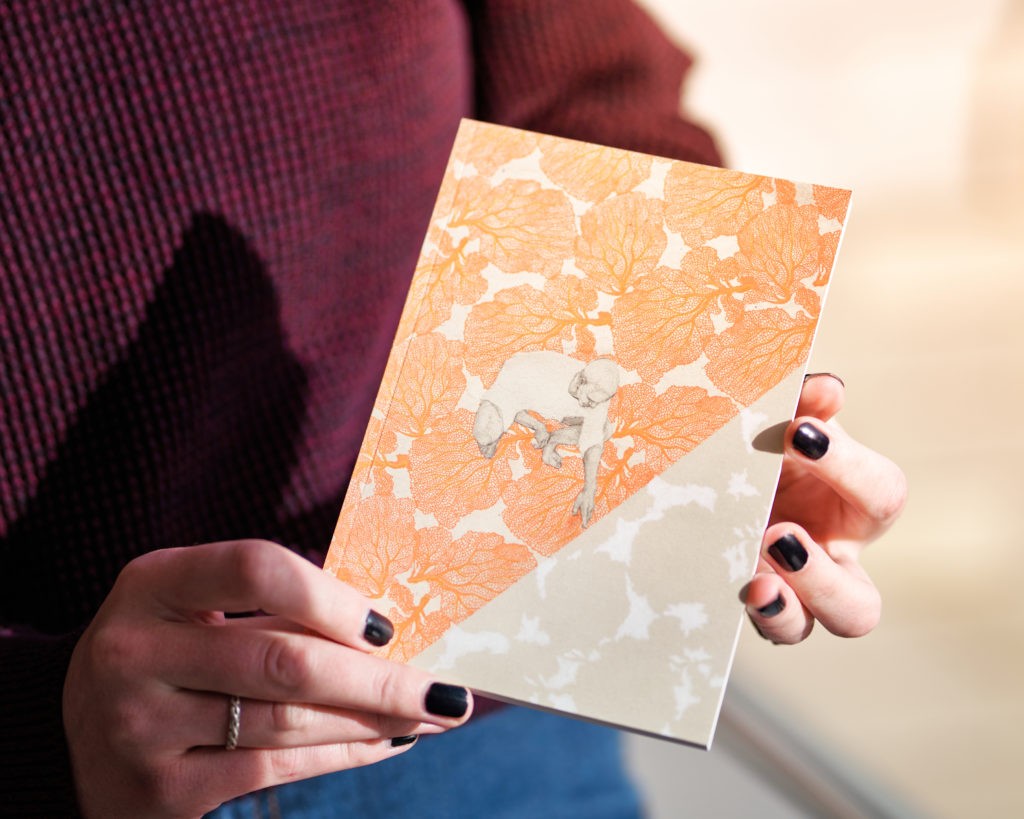BYU English major Dylan Robinson said he had no idea what he was doing when he walked into a literature reading last winter semester. He didn’t even know that Inscape — the journal hosting the reading — had accepted his poem for its publication until a few hours before the reading began.
He went to the reading at his professor’s encouragement, listened to other writers share brave, personal pieces and walked away from the experience hungry for more. Robinson joined the Inscape staff the following semester, and that — as another poet once said — has made all the difference.

Inscape is an art and literature journal hosted by the BYU English Department. It has published short works of fiction, nonfiction and poetry as well as visual art in its semi-annual editions. The journal published its first edition in the 1980s.
The journal takes submissions for the first six weeks of fall and winter semesters and gives its student staff a taste of the publishing world as they select and arrange them into a polished anthology.
“It’s an operation,” editor-in-chief Rebecca Cazanave said. Inscape gets hundreds of submissions every semester, which the staff narrows down to their favorites.
“There’s a difference between a functional short story,” she said, “and a functional short story that is fresh and has a unique voice in a week where you’ve read fifteen other short stories.”
The Winter 2020 edition published 18 submissions: four short stories, six essays, seven poems and one piece of art. It also included two interviews with professional authors.
Anybody can submit to Inscape, even if they aren’t associated with BYU or the English department. Assistant editor-in-chief Kath Richards submitted her first pieces as an undergraduate studying engineering.
Robinson said he’s noticed BYU encouraging students to write for the purpose of getting their work published, and he thinks it’s because it gives students hope and allows them to express themselves.
“There’s a real chance for honesty at Inscape,” he said. He recalled the pieces from the first reading he attended as brave and interesting, especially a personal piece somebody shared about suicide. He said it feels like a safe space where people share the things they normally wouldn’t, like struggles of faith at BYU.
“It’s cool to feel like you’re a part of something that’s supporting budding, growing authors and artists,” he said.

Richards said the final editions are expensive to print and not well circulated like other magazines, but the real value for her comes from her interactions with the staff and the creation process.
“It’s a fun way on either end for students to participate in a literary community,” she said.
Every week, staff members read a handful of submissions. They meet on Thursdays to discuss them and vote on which ones they want to see in the final edition, Robinson said.
“I’m always blown away by how much I learn about creative writing across genres by participating in discussions and submissions,” Cazanave said. “For a writer, it’s interesting to see what goes on behind the curtain.”
She said there are different teams involved in the production process. The archival team has been working to put the 1980s editions of Inscape online, the design team works in InDesign to arrange the book and publicity teams keep the Inscape social media accounts running. Team leads have the chance to gain leadership experience and boost their resumes.
“My time at Inscape as editor-in-chief makes me stand out in a crowd because I have work experience,” Cazanave said.
Robinson said his own experience getting published by Inscape bolstered his confidence to enter more pieces in contests. None of them have been accepted so far, but he said he was glad to feel like his initial poem touched people beyond himself.
He helped run Inscape’s Twitter page his first semester volunteering, and now as the publicity lead, he makes sure the social media pages are all functioning.
“Working there,” he said, “it’s a place to learn and grow — learn about the craft, learn about the business, and learn about the functions of the industry.”
Inscape will be accepting submissions for its next edition through Feb. 15. Interested readers can learn more and submit their work on Inscape’s website.




